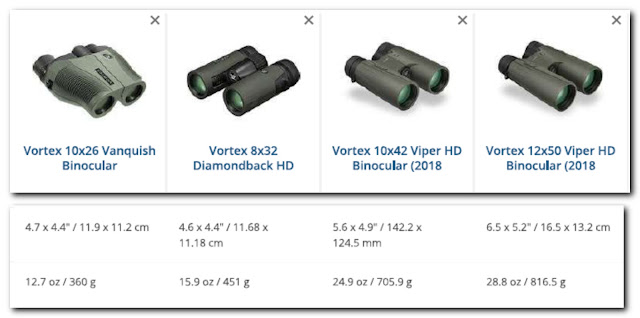Before
running out to buy a pair of binoculars you must decide what you want one for.
There are binoculars for different purposes and there is no universal pair that
will be suitable for all. In fact, you might end up with more than one
depending on the situation and purpose. Most of us have two or more cell phones
and more than a few lying around at home, so it isn’t a difficult decision to
buy a few! I have only five!
Decide what
it will be used for primarily. If you intend using it for wildlife viewing or
bird watching, you might want to get something that will perform better in low
light as birds and animals are active early in the morning or late evening. It
would also help if it were well protected against the weather.
 |
| 10x25 compact binoculars |
If your
purpose is sports a smaller one with slightly lesser magnification, 7x or so,
should suffice. If you want to peep into your neighbour’s house a small
unobtrusive one will ensure your safety!! However, if
you want to do a bit of astronomy you will need high magnification bins that
may be too heavy to hand hold and will need a tripod for stability. These big
chaps will have high magnification (12x to 20x) and large objective lenses.
 |
| 8x42 binoculars |
A good compromise
will be an 8x or 10x for most general-purpose use and I suggest keeping it in
that range for your first purchase. As you use it and develop an interest in
something specific and you can plan further upgrades around what you already
possess.
 |
| 10x42 binoculars |
One other aspect of the binocular that has to be kept in mind is its size and weight. Just
going by the magnification and objective size may not give you an idea what you
will end up carrying. If you pick up four binoculars of the same specification,
(let us say,10x40) from four different manufacturers they will be of different
sizes and shapes. Overall, their weights might be about the same but the heft
and the feel in your hands will be quite different. .
 |
| Sourced from B&H Photo Video |
Binoculars are generally classified according to their objective lens diameters. Compact
binoculars have an objective lens diameter of less than 30 mm (8x25, 10x25 etc).
Midsize ones have an objective lens diameter between 30 and 40 mm (8x32, 10x30
etc) The full-size binoculars have an objective diameter of 40 mm and above
(8x42, 10x42, 12x50 etc)
 |
| (Pic courtesy: www.rei.com) |

When you
chose your binocular it should match the purpose. If your usage
is primarily during the daytime and on treks, a compact binocular will be
easier to carry. Even some midsize ones may fit in your bag. If your purpose is
birding or wildlife viewing, you might have to go for a full sized instrument
with 8x42 or 10x42 specification, as you are likely to be far away from your
object of interest and these are the most comfortable for handholding.
If you
are into astronomy you will need something with 12x or 15x and more
magnification. These binoculars will get bulkier and will require a tripod to
keep steady. They will be nearly impossible to handhold. Their weights will increase (as in the above
illustration) from under a kilogram to close to one. Having this hanging on
your chest for hours together depends on the condition of your neck! It might be too much for an all day trial hike or even an extended birding trip.
So, before you rush out and grab the wrong pair. Sit down and analyze your requirement and your ability to carry it around. Smaller binoculars like a compact or the midsize with objective diameter of 32 mm should easily fit in a backpack with other things you might carry. Anything larger will need a proper harness or bigger bag. Spend a little time to decide the best one for you, otherwise you might regret it later.
For those who are impatient to go through the entire blog series, I'm giving below direct links to all the posts. You can go directly to the page you are interested in, though I suggest you go through each post as all of them contain some information that will be useful when you consider purchasing a binocular for your self.
1. Introduction
2. Part – 1: Anatomy of a Binocular
3. Part – 2: Purpose and Portability
4. Part – 3: Magnification, Objective diameter & FOV
5. Part – 4: Eye Relief
6. Part – 5: Exit pupil & Interpupillary distance
7. Part – 6: Image brightness
8. Part – 7: Focusing fundamentals
9. Part – 8: Weather sealing
10. Part – 9: Purchase decision
11. Part – 10: Care & Storage
12. Afterthoughts and accessories

No comments:
Post a Comment